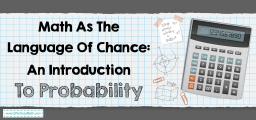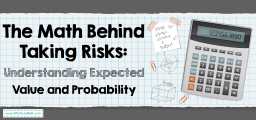How to Find Maxima and Minima of a Function?
Maxima and minima are the maximum or the minimum value of a function in a given range. In this step-by-step guide, you learn how to find the maxima and minima of a function.

Maxima and minima are known as the extrema of a function. Maxima will be the highest point of the curve in the given range and the minimum will be the lowest point of the curve.
A step-by-step guide to finding maxima and minima of a function
The maximum and minima are peaks and valleys in the curve of a function. For a function, there can be any number of maximum or minimum. In calculus, we can find the maximum and minimum values of each function without even looking at the function diagram. Maxima will be the highest point of the curve in the given range and the minimum will be the lowest point of the curve.
The combination of maximum and minimum is extrema. In the picture below, we see different peaks and valleys in the diagram. At \(x=a\) and at \(x=0\), we get maximum values of the function, and at \(x=b\) and \(x=c\), we get minimum values of the function. All the peaks are the maxima and the valleys are the minima.
There are two types of maximum and minimum in a function, which are:
- Local maxima and minima
- Absolute or global maxima and minima
Local maxima and minima
Local maximum and minimum are the maximum and minimum of a function that is generated in a certain interval. The local maximum is the value of a function at a point in a given interval where the values of the function close to that point are always less than the value of the function at that point. While the local minimum is the value of the function at a point where the values of the function close to that point are greater than the value of the function at that point.
- Local maxima: A point \(x=b\) is a point of local maximum for \(f(x)\) if in the neighborhood of \(b\) i.e in \((b−?, b+?)\) where \(?\) can be made arbitrarily small, \(f(x)< f(b)\) for all \(x ∈ \frac{(b−?, b+?)}{{b}}\). This simply means that if we consider a small region (interval) around \(x=b, f(b)\) should be the maximum in that interval.
- Local minima: A point \(x=a\) is a point of local minimum for \(f(x)\) if in the neighbourhood of \(a\), i.e. in \((a−?,a+?)\), (where \(?\) can have arbitrarily small values), \(f(x)>f(a)\) for all \(x ∈ \frac{(a−?,a+?)}{{a}}\). This means that if we consider a small interval around \(x=a\), \(f(a)\) should be the minimum in that interval.
Absolute maxima and minima
The highest point of a function in the whole domain is known as the absolute maximum of the function while the lowest point of the function within the entire domain of the function, is known as the absolute minimum of the function. There can only be one absolute maximum of a function and one absolute minimum of the function over the entire domain. The absolute maxima and minima of the function can also be called the global maxima and global minima of the function.
- Absolute maxima: A point \(x=a\) is a point of global maximum for \(f(x)\) if \(f(x)≤ f(a)\) for all \(x∈ D\) (the domain of \(f(x)\)).
- Absolute minima: A point \(x=a\) is a point of global minimum for \(f(x)\) if \(f(x) ≥ f(a)\) for all \(x∈ D\) (the domain of \(f(x)\)).
Finding the maxima and minima of a function
The maximum and minima of a function can be calculated using the first-order derivative test and the second-order derivative test.
First-order derivative test for maxima and minima
The first derivative of the function shows the slope of the function. Near a maximum point, the slope of the curve increases with going to the maximum point, then decreases to zero at the maximum point, and then decreases as we move away from the maximum point. Similarly, near the minimum point, the slope of the function decreases as we move toward the minimum point, then becomes 0 at the minimum point, and then increases as we move away from the minimum point.
Suppose we have a function \(f\) that is continuous at the critical point and is defined in the open interval \(I\) and \(f’(c)= 0\) (slope is \(0\) at \(c\)). Then we examine the value \(f'(x)\) at the left point of the curve and the right of the curve and examine the nature of \(f'(x)\), then we can say that the given point will be:
- Local maxima: If \(f’(x)\) changes the sign from positive to negative as \(x\) increases via point \(c\), then \(f(c)\) gives the maximum value of the function in that range.
- Local minima: If \(f’(x)\) changes the sign from negative to positive as \(x\) increases via point \(c\), then \(f(c)\) gives the minimum value of the function in that range.
- Point of inflection: If the sign of \(f’(x)\) doesn’t change as \(x\) increases via \(c\), and the point \(c\) is neither the maxima nor minima of the function, then the point \(c\) is called the point of inflection.
Second-order derivative test for maxima and minima
In the second-order derivative test for maxima and minima, we find the first derivative of the function, and if it gives the value of the slope equal to \(0\) at the critical point \(x=c (f’(c)= 0)\), then we find the second derivative of the function.
If the second derivative of the function exists in the given range, the given point will be as follows:
- Local maxima: If \(f”(c)<0\)
- Local minima: If \(f”(c)>0\)
- Test fails: If \(f”(c)=0\)
Exercises for Maxima and Minima of a Function
Find the extrema of each function.
- \(\color{blue}{f(x)=x^3-3x^2-9x+12}\)
- \(\color{blue}{f\left(x\right)=4sin^2x+1,\:0\le \:x\le 8}\)
- \(\color{blue}{f\left(x\right)=x^2,\:0\le \:x\le 3}\)
- \(\color{blue}{f\left(x\right)=2x^2-2x^3}\)

- \(\color{blue}{ max:(-1, 17), min:(3,-15)}\)
- \(\color{blue}{max:(\frac{\pi }{2}, 5), min:(0,1)}\)
- \(\color{blue}{ max:(3, 9), min:(0,0)}\)
- \(\color{blue}{ max:(\frac{2}{3},\frac{8}{27}), min:(0,0)}\)
Related to This Article
More math articles
- The Ultimate 6th Grade SC Ready Math Course (+FREE Worksheets)
- FREE 7th Grade ACT Aspire Math Practice Test
- How to Make Inferences from Data? (+FREE Worksheet!)
- 8th Grade MAP Math FREE Sample Practice Questions
- How to Graph Inverse Functions
- The Ultimate 7th Grade CMAS Math Course (+FREE Worksheets)
- FREE FTCE Math Practice Test
- FREE ALEKS Math Practice Test
- Top 10 5th Grade OST Math Practice Questions
- Do You Need to Pass the CBEST to be a Substitute Teacher?



























What people say about "How to Find Maxima and Minima of a Function? - Effortless Math: We Help Students Learn to LOVE Mathematics"?
No one replied yet.